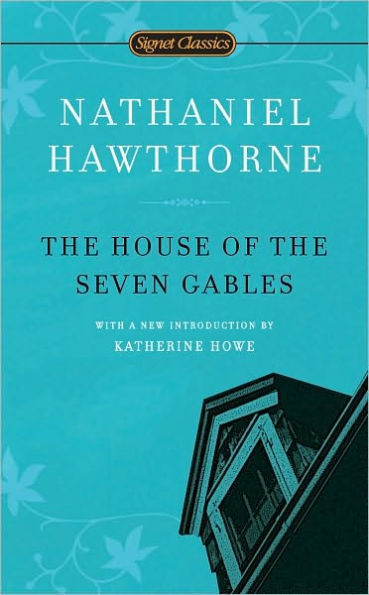
The House of the Seven Gables
320
The House of the Seven Gables
320eBook
Related collections and offers
Overview

Product Details
| ISBN-13: | 9781101198278 |
|---|---|
| Publisher: | Penguin Publishing Group |
| Publication date: | 10/05/2010 |
| Sold by: | Penguin Group |
| Format: | eBook |
| Pages: | 320 |
| Sales rank: | 1,001,236 |
| File size: | 353 KB |
| Age Range: | 18 Years |
About the Author

Date of Birth:
July 4, 1804Date of Death:
May 19, 1864Place of Birth:
Salem, MassachusettsPlace of Death:
Plymouth, New HampshireEducation:
Bowdoin College, Brunswick, Maine, 1824Read an Excerpt
Half-way down a by-street of one of our New England towns, stands a rusty wooden house, with seven acutely peaked gables facing towards various points of the compass, and a huge, clustered chimney in the midst. The street is Pyncheon-street; the house is the old Pyncheon-house; and an elm-tree, of wide circumference, rooted before the door, is familiar to every town-born child by the title of the Pyncheon-elm. On my occasional visits to the town aforesaid, I seldom failed to turn down Pyncheon-street, for the sake of passing through the shadow of these two antiquities; the great elm-tree and the weather-beaten edifice.
The aspect of the venerable mansion has always affected me like a human countenance, bearing the traces not merely of outward storm and sunshine, but expressive also of the long lapse of mortal life, and accompanying vicissitudes that have passed within. Were these to be worthily recounted, they would form a narrative of no small interest and instruction, and possessing, moreover, a certain remarkable unity, which might almost seem the result of artistic arrangement. But the story would include a chain of events extending over the better part of two centuries, and, written out with reasonable amplitude, would fill a bigger folio volume, or a longer series of duodecimos, than could prudently be appropriated to the annals of all New England during a similar period. It consequently becomes imperative to make short work with most of the traditionary lore of which the old Pyncheon-house, otherwise known as the House of the Seven Gables, has been the theme. With a brief sketch, therefore, of the circumstances amid which the foundation of the house was laid, and a rapid glimpse at its quaint exterior, as it grew black in the prevalent east wind pointing, too, here and there, at some spot of more verdant mossiness on its roof and walls, we shall commence the real action of our tale at an epoch not very remote from the present day. Still, there will be a connection with the long past; a reference to forgotten events and personages, and to manners, feelings, and opinions, almost or wholly obsolete; which, if adequately translated to the reader, would serve to illustrate how much of old material goes to make up the freshest novelty of human life. Hence, too, might be drawn a weighty lesson from the little-regarded truth, that the act of the passing generation is the germ which may and must produce good or evil fruit, in a far-distant time; that, together with the seed of the merely temporary crop, which mortals term expediency, they inevitably sow the acorns of a more enduring growth, which may darkly overshadow their posterity.
The House of the Seven Gables, antique as it now looks, was not the first habitation erected by civilized man on precisely the same spot of ground. Pyncheon-street formerly bore the humbler appellation of Maule's Lane, from the name of the original occupant of the soil, before whose cottage-door it was a cow-path.
Table of Contents
| Introduction | vii | |
| Suggestions for Further Reading | xxxv | |
| A Note on the Text | xxxix | |
| The House of the Seven Gables | 1 | |
| Notes | 321 |
Reading Group Guide
1. Hawthorne considered this novel to be a romance, which in literary terms refers to a narrative, allegorical treatment of heroic, fantastic, or supernatural events. Do you think this term accurately describes the book? Why or why not?
2. What do you make of the relationship between interior consciousness and external appearance in the novel? How does this conflict, as experienced by each of the central characters, inform the novel? And how does the house serve as a metaphor for this struggle?
3. Discuss the theme of class and social structure in the novel. What do you think Hawthorne intends in his depiction of Hepzibah's and Clifford's slow decline, and the curse on the Pyncheons' house? Are these related in any way? What about the role of the Maules?
4. Is the house a kingdom or a prison? Neither, or both? What is the curse that afflicts the Pyncheons? Discuss.
5. Discuss the role played by Holgrave in the novel. How does his nomadic, rootless existence stand in contrast to the Pyncheons? How does his marriage to Phoebe complicate this?
6. Discuss the scene in which Clifford attempts to join the procession. How does this illuminate the fundamental struggle of the Pyncheon family?
